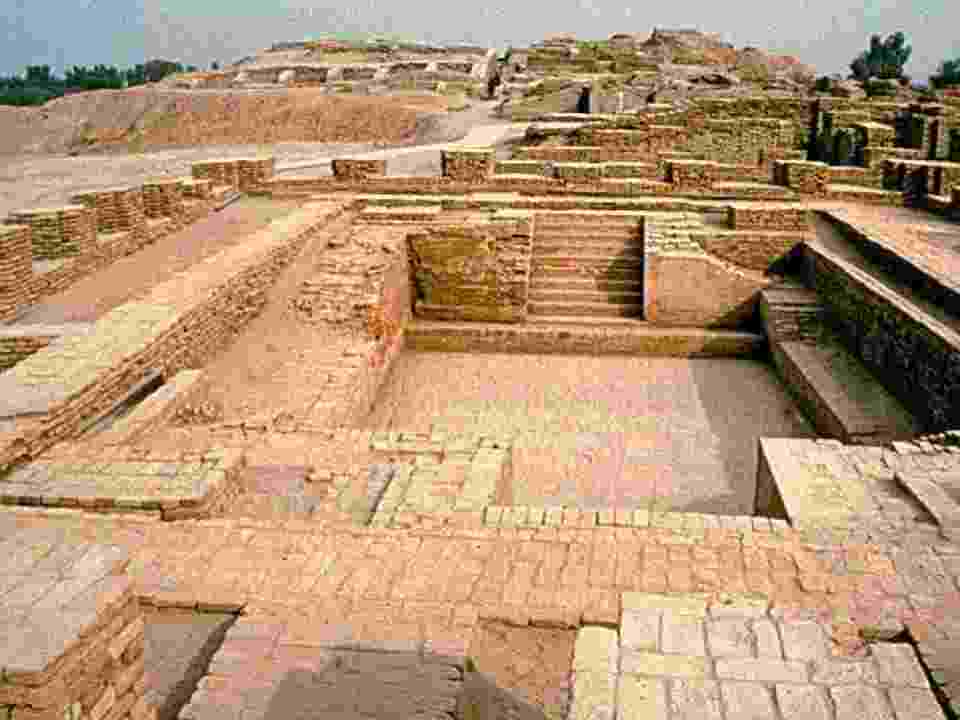Description
Archaeologists recently discovered the Harappan-era fortified settlement of Morodharo.
About Morodharo
It is a fortified settlement dating back to the Harappan period.
Location- Kutch District, Gujarat.
Features
The fortification measures 102 meters east to west and 58 meters north to south.
The average thickness of the wall is 3.3 meters.
It has a 10x10 m platform on the south-west and a well on the northeast.
Burial cairns, or mounds of stones used to mark a boundary, can also be found here.
Harappan pottery with perforated jar sherds, reserved slipware, and terracotta cakes were discovered. All of these items bear striking resemblance to those found in Dholavira.
The Indus Valley/Harappan civilisation was South Asia's first urban civilisation, coexisting with Mesopotamia and Egypt.
The Harappan civilisation had the largest area (approximately 8,00,000 square kilometers) of the three civilisations.
The major cities during the Harappan period included Harappa (Punjab, Pakistan), Mohenjo-Daro (Sindh, Pakistan), Dholavira, Lothal, and Surkotada (Gujarat, India), Kalibangan in Rajasthan, and Banawali and Rakhigarhi (Haryana, India).
The Harappan civilization's town planning included the following
The grid pattern is rectangular.
Harappan cities were designed in a grid pattern, with streets running north-south and east-west, forming a well-organized Streets and lanes intersected almost exactly at right angles, dividing the city into several rectangular blocks.
Planned street and alleyways:
Harappan streets and alleyways were meticulously planned and constructed. They were wide enough to accommodate carts and pedestrians, and some streets featured covered drains.
Fortification- The cities were surrounded by mud brick fortification walls that protected them from robbers, cattle raiders, and floods.
City Divisions
The city was divided into two parts: an elevated citadel and a lower city.
Upper part- An elevated citadel in the western part was used to construct large-scale structures such as granaries, administrative buildings, pillared halls, and courtyards.
Lower town- Beneath the citadel in each city was a lower town with brick houses inhabited by the common people.
Material used- Burnt bricks were used extensively in almost all types of constructions, and stone buildings were not common during Harappan culture.
Residential areas- Cities were divided into separate residential areas. Houses were constructed of baked bricks and frequently had multiple stories, indicating a well-developed urban society.
The houses were typically built around courtyards, with some featuring private wells and properly ventilated bathrooms. The houses had tiled bathrooms and no windows that looked out onto the street.
Harappans had a sophisticated drainage system that was well-organized. Every house had drains that led into the street drains. Drains were made from mortar, lime, and gypsum.
Granaries and storage facilities- The cities had well-designed granaries and storage facilities for excess agricultural produce.
Welcome to Notopedia.com, your free learning platform that caters to the diverse needs of students and aspirants across a spectrum of entrance exams and educational endeavors. Whether you're preparing for highly anticipated exams like CAT 2023, NEET 2023, JEE Main, or bank job vacancies, our platform offers a wealth of resources to guide you towards success. Stay up-to-date with the latest exam dates, announcements, and results for various government recruitment exams, including SSC CGL, CHSL, NDA, and UPSC. Explore comprehensive study materials, sample papers, and exam patterns to hone your skills and boost your confidence. From important dates like CBSE Class 10 and 12 date sheets to exam-specific information like JEE Main 2023 application form date, we cover it all. Notopedia.com is your go-to source for everything from admissions and admit cards to scholarships and college information. Whether you're aiming for a career in defense, government, banking, or higher education, our free learning platform equips you with the knowledge and resources you need to excel. Join us in your educational journey and unlock a world of opportunities, guidance, and comprehensive support.
For more Updates and Information - Visit Notopedia's Bulletin Board
For Latest Sarkari Jobs - Visit Notopedia's Sarkari Jobs Section
For access to more than 20,000 Colleges - Visit Notopedia's College Section
For School Studies and Exams Preparation across 14 Boards - Visit Notopedia's School Section
For Comprehensive Preparation of Sarkari Job Exams - Visit Notopedia's Sarkari Exams Section










